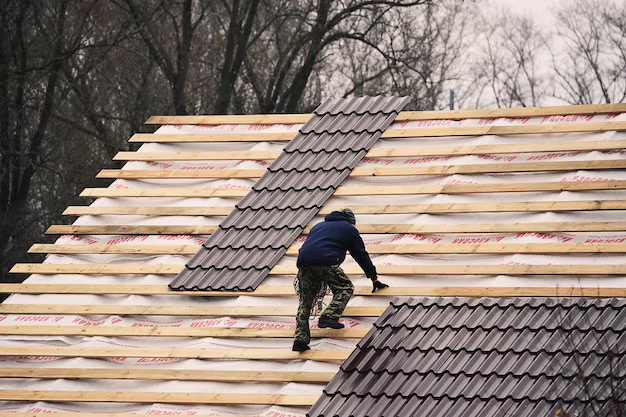What You Need to Know About New Roof Costs
Investing in a new roof can be a significant but necessary expense for homeowners. It's not just about maintaining the aesthetics of your home; it's about safeguarding your investment from weather elements and potential damage. But how much does a new roof really cost? The answer isn't quite as straightforward as you might think.
Factors Influencing Roof Costs
The cost of a new roof can vary drastically based on several factors:
- Materials: Asphalt shingles might range from $100 to $150 per square, while metal roofing can cost between $300 and $1,500 per square. High-end materials like slate or tile can reach $1,200 to $3,000 per square.
- Roof Size and Complexity: A larger or more complex roof design with multiple facets, peaks, and valleys typically costs more.
- Labor Costs: Depending on your location, labor can considerably affect total expenses. Urban areas often see higher labor costs than rural settings.
- Removal and Disposal: If an old roof needs to be removed, this adds to the expense. Disposal fees can also vary, sometimes significantly.
Average Costs and Price Range
On average, homeowners can expect to pay between $5,000 and $10,000 for a new roof. However, this is a starting point; high-end installations or large homes can see prices upwards of $25,000 or more.
Government and Financial Assistance Programs
For many, the cost of a new roof might seem overwhelming. Thankfully, there are financial assistance options available to help ease the burden:
- Government Grants and Loans: Programs like the Federal Housing Administration (FHA) Title I Property Improvement Loan might support roofing updates. Similarly, local government initiatives may offer financial incentives for home improvements that enhance energy efficiency.
- Energy Efficiency Incentives: Some states offer rebates or tax incentives for roofs that improve energy efficiency, such as cool roofs. Check with local utilities or government websites for specific programs in your state.
- Insurance: If your roof has been damaged by events such as storms or fire, your homeowners insurance might cover part of the replacement cost. Check your policy or speak with your insurance provider.
Credit Solutions and Other Options
Beyond government aid, there are financing options that can help manage the cost:
- Home Equity Loans and Lines of Credit (HELOC): These can be appealing due to their typically lower interest rates compared to personal loans.
- Personal Loans: Some banks and credit unions offer personal loans specifically for home improvements.
- Credit Cards: Use with caution due to potentially high interest rates, but some cards may offer 0% interest introductory periods.
Reinvesting in your roof can not only enhance your home’s curb appeal but also increase its energy efficiency, potentially saving you money on bills. Acknowledging the upfront costs can be daunting, but exploring the above avenues can make this critical home improvement more achievable.
When planning a new roof, consider not just the immediate financial outlay but the overall value, including peace of mind and long-term savings. Explore your local resources, and you might find the financial assistance you need comes from places you hadn’t initially considered.
Financial Assistance and Credit Solutions Cheat Sheet
- 💰 FHA Title I Loan: Offers fixed-rate loans for home improvements.
- 🏠 Local Government Grants: Check for specific energy efficiency incentives near you.
- 🏦 Home Equity Options: Lower rates through home equity loans or HELOCs.
- 💳 Credit Cards: Potential 0% APR introductory offers but be cautious about high rates later.
- 🌟 Insurance Policies: Damaged roofs due to covered events may qualify for partial coverage.
- 🔦 Energy Efficient Rebates: State-specific programs for energy-saving roofs.
Understanding your options fully prepares you to make an informed choice when that roofing bill becomes a reality.
